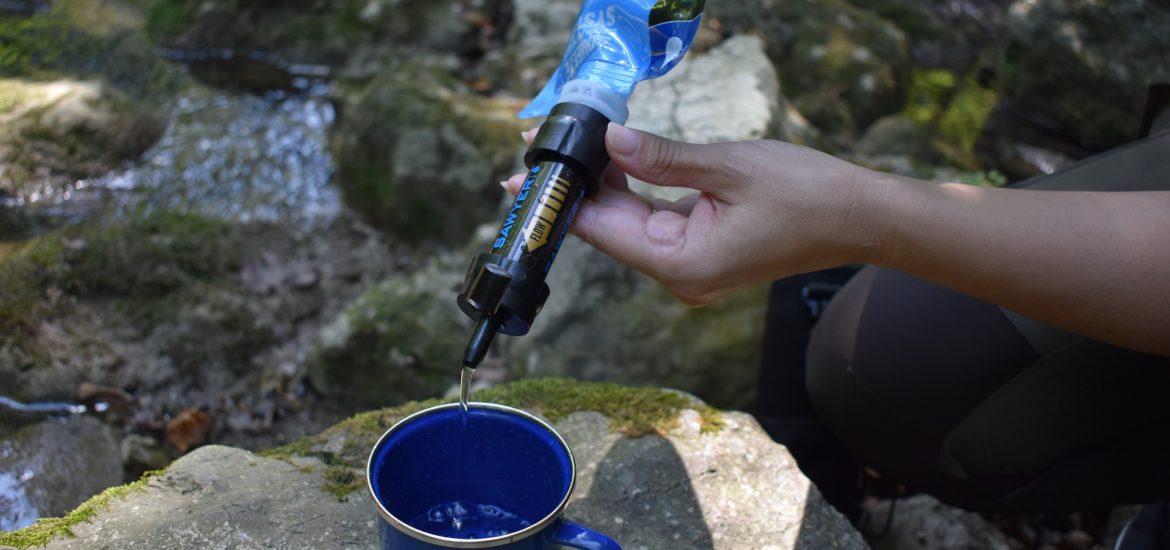Water is absolutely necessary for any camping trip, but how much water do you actually need?
Well, depending on the type and location of your camping adventure, that might mean either packing in and storing large quantities of water on site, or filtering/purifying water from a local source near your campsite.
For the average adult, 4 liters or 1 gallon per day of clean water is required for consumption while camping. However, additional water may be required for cooking, cleaning, and hygienic purposes.
So, let’s review everything you need to know about camping water requirements!
Article Contents:
Why is Hydration Important While Camping?
For any type of outdoor activity, especially for camping, maintaining proper hydration is very important. Without a sustained level of water intake, you body can degrade quite rapidly.
Dizziness, fatigue, and cramping can be symptoms of dehydration. Dehydration can seriously impair your safety and overall well-being.
And, in remote camping locations, help can take hours to arrive.
Therefore, it’s critical that you replenish fluids at regular intervals, especially in arid, humid and alpine camping environments.
Drinking Water Requirements per Person

When it comes to camping, what’s the recommended amount of water required per person?
As a general rule of thumb, the average adult male camper requires about 1 litre of water per 25 kg of body weight, whereas the average adult women camper requires about 1 litre of water per 30 kg of body weight.
However, there are a few factors that influence the amount of water you actually need to consume. Some of these factors include:
- Location – arid, humid, or alpine environments
- Level of activity – lounging, intense hiking, etc.
- Time of year – winter vs. summer
- Diet – varying water content in foods, salt & sugar content, etc.
- Body type – pregnant, excessive perspiration, age, BMI, etc.
So, depending on these additional factors, it’s vital that you adjust or increase your water intake and consume an adequate amount of water to maintain a healthy level.
Personally, I ensure I drink at least 3 full bottles of water from my 1 liter (32 oz.) camping hydroflask. Breakfast, lunch and dinner meals would add a minimum of an additional 1 liter of water.
However, for peak summer camping trips, backcountry, portaging, or hike-through adventures, I typically increase my water intake by 50%. This helps compensate for moisture loss through sweating, as well as more rigorous physical energy expenditure.
Pro-tip: Alcoholic and caffeinated drinks such as beer and coffee have a diuretic effect which causes you to urinate more often. So, make sure you drink extra water to compensate for the additional water loss.
Sources of Water While Camping

When it comes to sourcing clean water for camping, you basically have two options. You can either pack and bring water, or find and utilize a water source at or near your campsite.
It all depends on the type of camping you’re doing.
Car Camping
The great thing about car camping is that your vehicle does all the heavy lifting and storage of supplies, including water.
You can easily bring bottled water, but a more environmentally friendly option is to fill large containers with clean water before heading out.
This 7 gallon water container on Amazon is a great option for most car camping trips. I have a very similar water container and love the easy-to-use spout and square design.
Campground Camping
Most established campgrounds have running water either from a municipality water line, locally treated water source, or pumped from a local well.
These water sources are safe for consumption and are unrestricted from a consumption perspective. However, it makes sense to conserve water whenever you can.
Backcountry and Thru-Hike Camping
For backcountry trips that require portaging or hiking, carrying large quantities of clean water isn’t feasible or practical.
Instead, campers must rely on nearby bodies of water such as lakes, rivers, and streams.
However, direct consumption of water from these sources risks ingesting harmful water-borne pathogens. The water must be filtered and/or purified before consumption.
For more information on water filtration and purification, check out my in-depth article all about How to Make Water Safe to Drink including the 3 different water treatment methods for camping.
Pro-tip: Never rely on stagnant water for consumption, even if you plan on filtering it. Stagnant water incubates harmful bacteria and parasites, and may contain fecal matter [Source]. Instead, find moving water and treat that before drinking.
This article contains affiliate links, which help support this blog at no cost to you!
